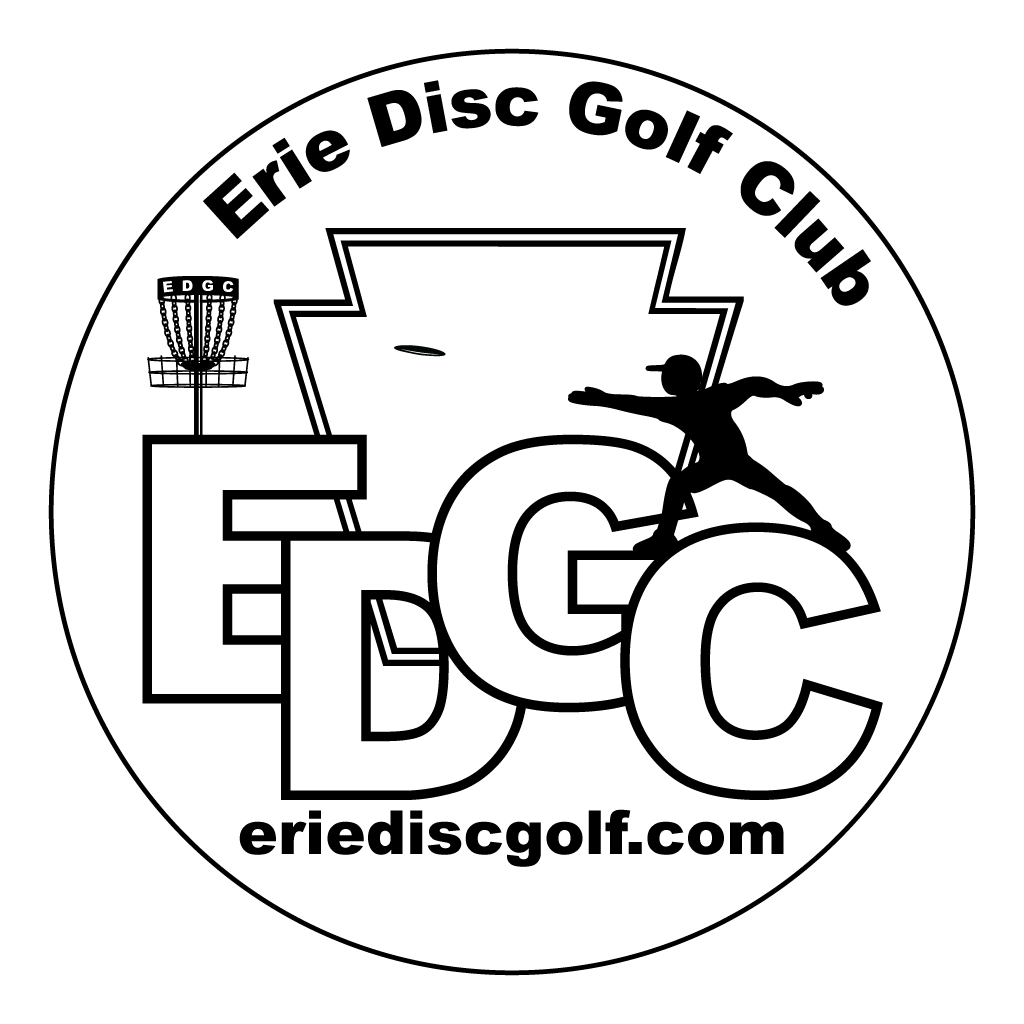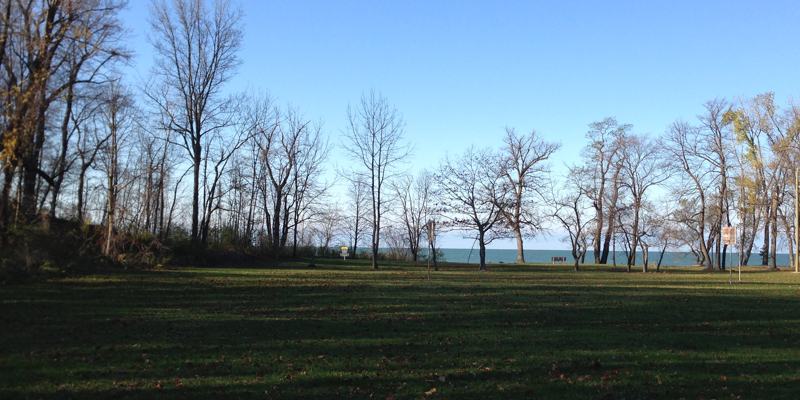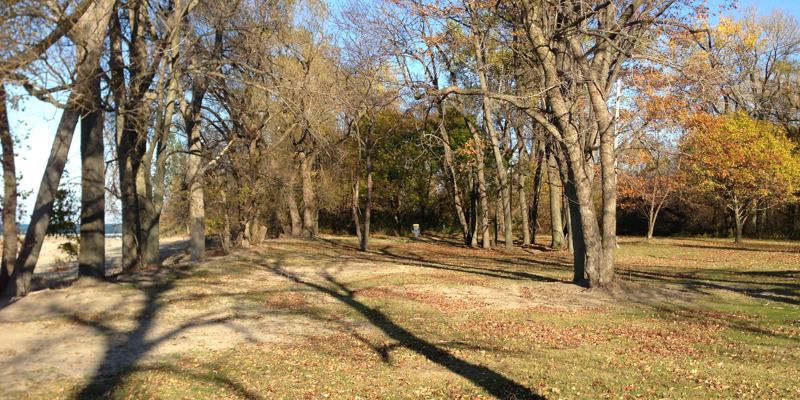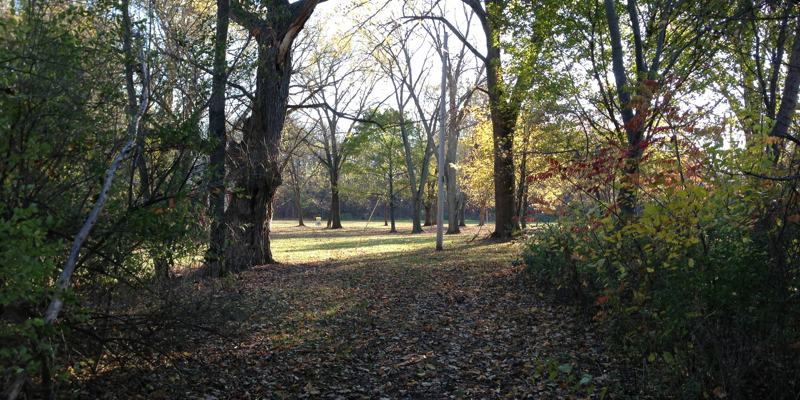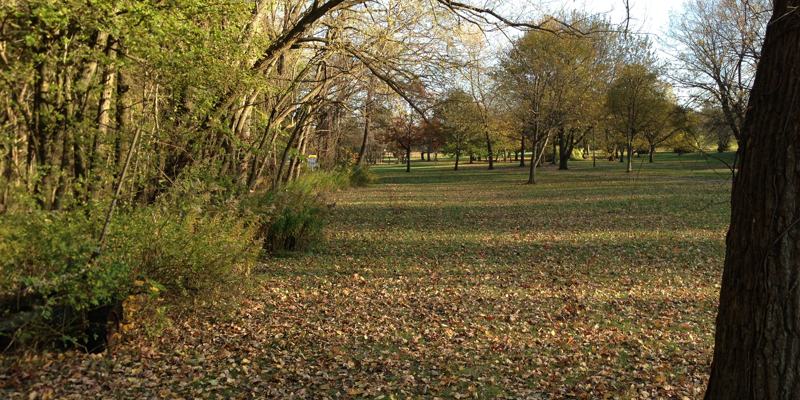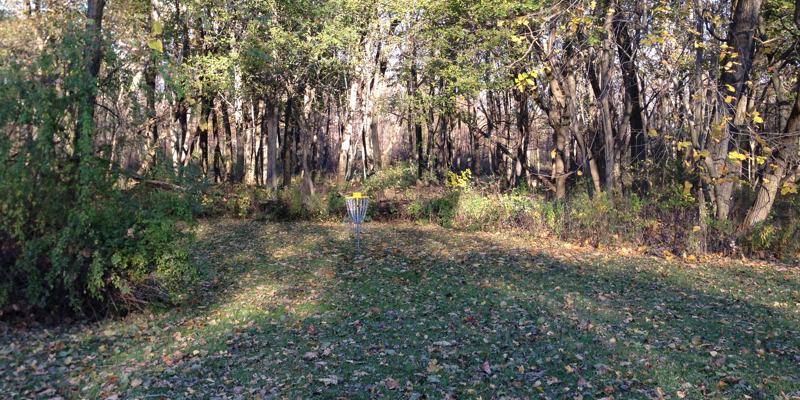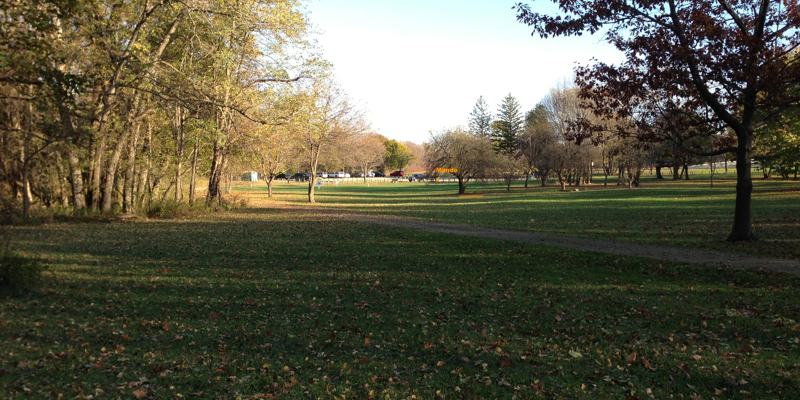 Brandon and I (Erik) re-visited our “concept course” in North East at 20-Mile Park (“North East Township Community Conservation Park” or “NETCCP”).
Brandon and I (Erik) re-visited our “concept course” in North East at 20-Mile Park (“North East Township Community Conservation Park” or “NETCCP”).
We took a measuring wheel, made a few changes to the locations of a few baskets and tees to eliminate any safety concerns we could foresee, and played each hole several times to a portable basket.
You can click the image to the right to see a larger image (or click here). The course in its current version is:
Hole 1 - Par 3 - 340 feet Hole 2 - Par 3 - 285 feet Hole 3 - Par 3 - 295 feet Hole 4 - Par 3 - 350 feet Hole 5 - Par 3 - 315 feet Hole 6 - Par 3 - 245 feet Hole 7 - Par 3 - 340 feet Hole 8 - Par 3 - 240 feet Hole 9 - Par 4 - 470 feet ------------------------- Total: Par 28 - 2540 feet
A “tour” of the course follows. Click on the “tee pad perspective” shots for a larger view of the image.The baskets in the smaller versions of these photos can be tough to see, so I encourage you to click the tee pad perspective photos for a larger version of each.
Hole #1 – Par 3 – 340 Feet
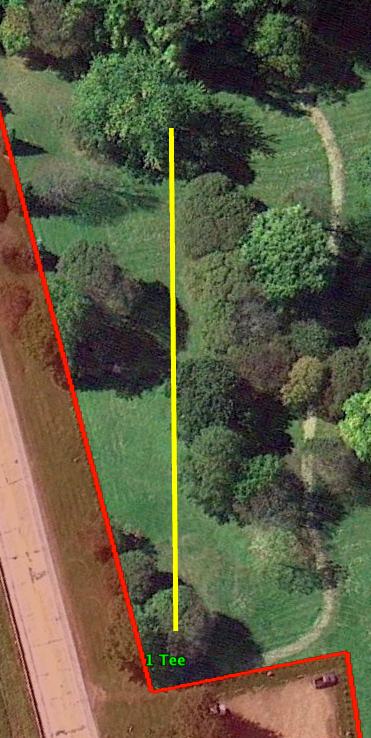 The first hole is close to the road (which plays as Out of Bounds) but not near enough to cause any concern about discs flying onto Route 5. Two trees at the limits of shorter throwers will block the errant throws, and most people, with the target right, will pull the disk right.
The first hole is close to the road (which plays as Out of Bounds) but not near enough to cause any concern about discs flying onto Route 5. Two trees at the limits of shorter throwers will block the errant throws, and most people, with the target right, will pull the disk right.
The hole sets up for a gentle RHBH anhyzer or a RHFH that fades out at the end. The basket sits beneath the right side of the tree, providing for visual distractions on the height but little in the way of actual trouble, unless you end up behind the trunk 25′ or so away.
A longer thrower with control can birdie the hole often, but right out of the gate those two qualities may not be as readily available as one would like.
Hole #2 – Par 3 – 285 Feet
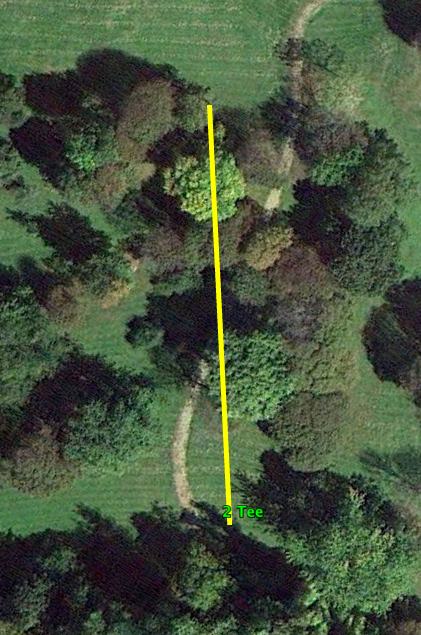 The second hole tee pad is located 50 feet right of the first basket (trees – as well as the distance from the first tee pad – protect players from being hit). The hole has a pair of trees down the middle that forces a player to go low and right with a fairly straight shot or take the more open left-hand route. The basket is positioned just right of the center-line – visible from the tee and edging players towards taking the slightly more confined but more direct route to the right.
The second hole tee pad is located 50 feet right of the first basket (trees – as well as the distance from the first tee pad – protect players from being hit). The hole has a pair of trees down the middle that forces a player to go low and right with a fairly straight shot or take the more open left-hand route. The basket is positioned just right of the center-line – visible from the tee and edging players towards taking the slightly more confined but more direct route to the right.
The RHBH anhyzer is a tougher shot, but this hole will play well for the accurate RHFHer who can hit a window.
Hole #3 – Par 3 – 295 Feet
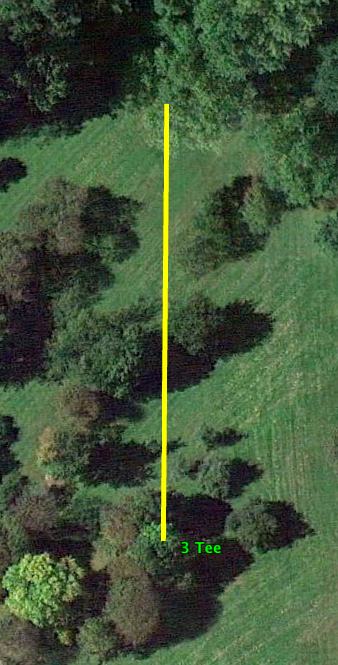 The third hole is a similar length to the second but requires a fairly different shot. Though the window off the tee is fairly well defined, the shapes a disc can take after that are as varied as you like. RHBH throwers will want to get some turn before their disc fades left if they want an easy birdie, and RHFHers will have to hit a good line to deliver their disc to the basket.
The third hole is a similar length to the second but requires a fairly different shot. Though the window off the tee is fairly well defined, the shapes a disc can take after that are as varied as you like. RHBH throwers will want to get some turn before their disc fades left if they want an easy birdie, and RHFHers will have to hit a good line to deliver their disc to the basket.
The basket sits beneath the outer edge of a large tree. The tree could deflect high tee shots down to the basket, or catch them or kick them onto the hillside long.
Hole #4 – Par 3 – 350 Feet
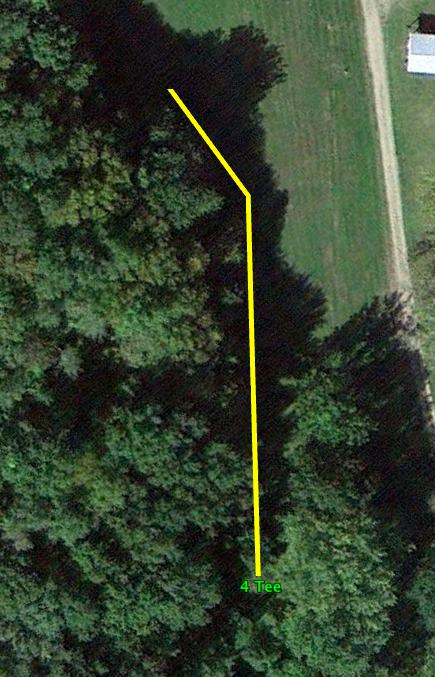 Hole four presents the first “blind” hole on the course. The basket is tucked fairly hard against the wooded hillside and around the corner from the tee pad. A RHBH that fades at the end of its flight might get close, but you’ll flirt with the hillside and the trees to do it. The safer play out to the right is made more challenging by the row of trees to the right of the player, but should present an easy three if you’re skilled at laying up and putting. A shot that turns and then fades pretty hard is ideal – if you’ve got the length and it fades enough, you could have a good birdie chance. Find the hillside or turn it right too much and you’ll scramble to make par.
Hole four presents the first “blind” hole on the course. The basket is tucked fairly hard against the wooded hillside and around the corner from the tee pad. A RHBH that fades at the end of its flight might get close, but you’ll flirt with the hillside and the trees to do it. The safer play out to the right is made more challenging by the row of trees to the right of the player, but should present an easy three if you’re skilled at laying up and putting. A shot that turns and then fades pretty hard is ideal – if you’ve got the length and it fades enough, you could have a good birdie chance. Find the hillside or turn it right too much and you’ll scramble to make par.
Hole #5 – Par 3 – 315 Feet
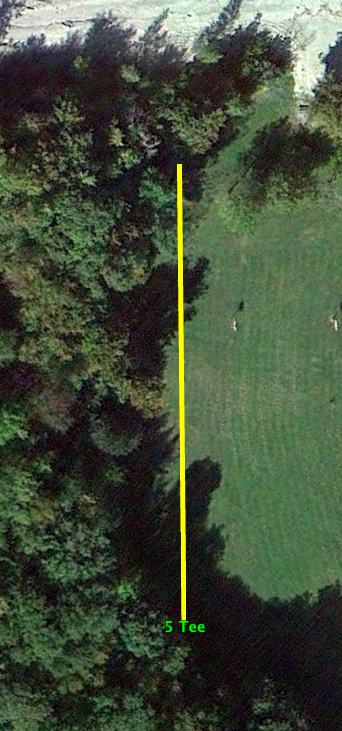 Hole five plays across an open field straight towards the beach. A bench beyond the basket and well to the right is out of range, keeping park-goers safe. The basket sits in a natural area with a large tree protecting the right-hand side. If you want a birdie, you’re going to flirt with that tree, and the area around the basket demands precision. If you want a par, it should be relatively easy… so long as you don’t put yourself in-line with the tree or misjudge your approach shot to the small area around the basket.
Hole five plays across an open field straight towards the beach. A bench beyond the basket and well to the right is out of range, keeping park-goers safe. The basket sits in a natural area with a large tree protecting the right-hand side. If you want a birdie, you’re going to flirt with that tree, and the area around the basket demands precision. If you want a par, it should be relatively easy… so long as you don’t put yourself in-line with the tree or misjudge your approach shot to the small area around the basket.
Hole #6 – Par 3 – 245 Feet
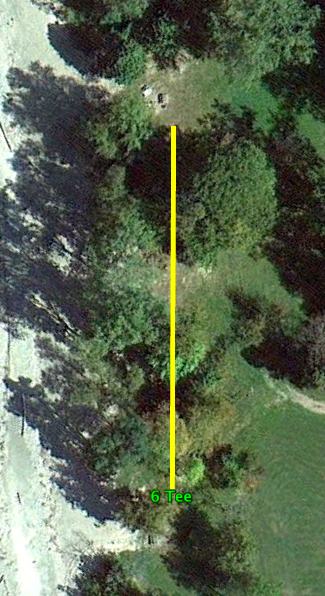 The sixth hole at the proposed course takes the disc golfer past the bench (which, if unoccupied, can let the weary disc golfer take in the view of beautiful Lake Erie for a bit). As a short hole, this would be the disc golfer’s best chance at an ace were it not for the natural tunnel provided by the trees.
The sixth hole at the proposed course takes the disc golfer past the bench (which, if unoccupied, can let the weary disc golfer take in the view of beautiful Lake Erie for a bit). As a short hole, this would be the disc golfer’s best chance at an ace were it not for the natural tunnel provided by the trees.
Like the second hole, a lone tree splits the fairway. A bit more room appears to the right, tempting disc golfers to go that route, but the shot that turns from left to right and played through the much smaller gap on the left is still an option.
This hole, as much as any other on the course, presents a significant challenge to the advanced disc golfer, while still providing an enjoyable and not-too-difficult test for the new and intermediate players.
Hole #7 – Par 3 – 340 Feet
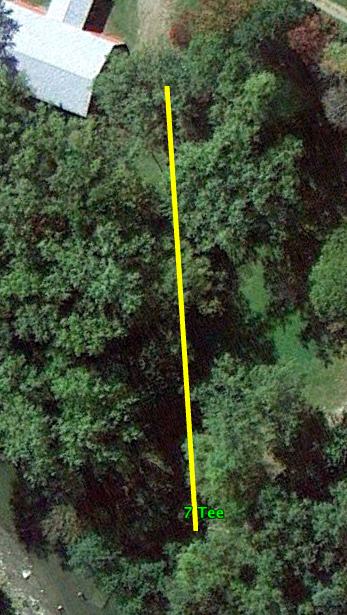 The seventh hole tee pad is tucked well back into the trees around the corner from the sixth basket. This natural teeing area provides a few different lines towards the basket, particularly given the wire holding up a utility pole just right of a line to the basket. The ideal shot on this hole – whether you’re a forehanded or a backhander – doesn’t curve very much.
The seventh hole tee pad is tucked well back into the trees around the corner from the sixth basket. This natural teeing area provides a few different lines towards the basket, particularly given the wire holding up a utility pole just right of a line to the basket. The ideal shot on this hole – whether you’re a forehanded or a backhander – doesn’t curve very much.
The basket itself is over 50 feet from the maintenance building and tucked amongst a pair of trees, so approach shots (or tee shots if you’ve got a long, accurate, straight throw in your arsenal of shots) will need to be well placed to allow for an easy third shot.
Hole #8 – Par 3 – 240 Feet
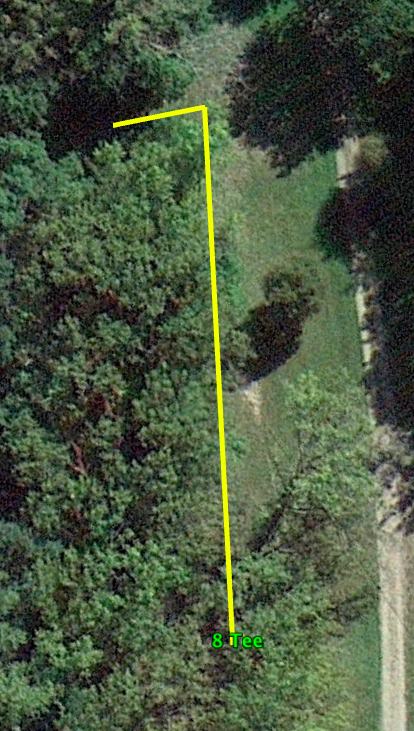 At first glance the eighth hole might seem like a “filler” hole that everyone will par, but the hole still requires some skill. The basket sits in a natural cut-out area to the left, and the tee shot requires relatively precise distance control to stop your disc with an open angle to the basket.
At first glance the eighth hole might seem like a “filler” hole that everyone will par, but the hole still requires some skill. The basket sits in a natural cut-out area to the left, and the tee shot requires relatively precise distance control to stop your disc with an open angle to the basket.
The hole can be birdied – if you hug the treeline to the left, or if you have a really big arm you can spike hyzer an RHBH and let it carve in from the right, but one mistake in line, height, or distance and par will be in serious jeopardy.
The extra view below shows the hollowed out area in which the basket sits.
Hole #9 – Par 4 – 470 Feet
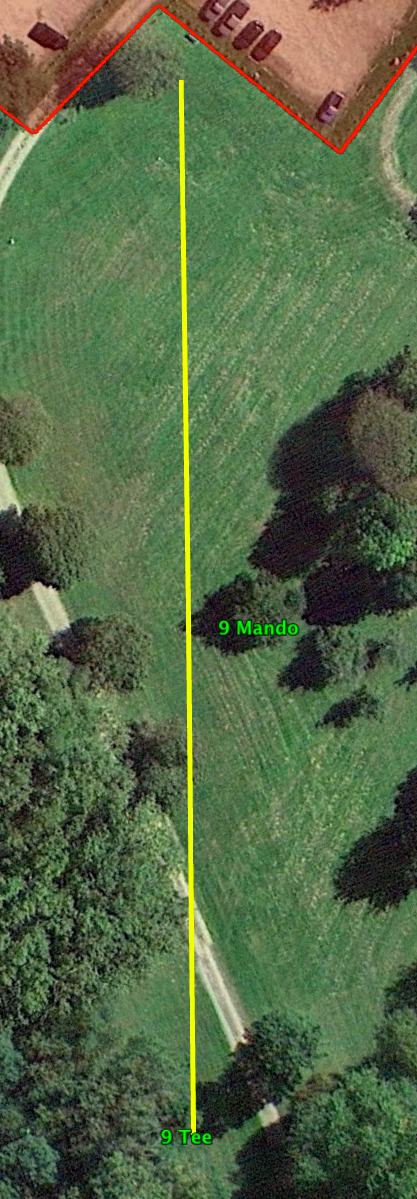 The ninth hole offers a great way to settle a close match – those with loooooong arms can get close to the basket for an eagle attempt, while for most even two solid throws will present a challenging third for birdie. The hole has a mandatory to the right to force play left, though the ideal line has players cutting it as close to the mandatory as possible. The mando also helps to steer players away from the third tee, which is over 50 feet right of the tree.
The ninth hole offers a great way to settle a close match – those with loooooong arms can get close to the basket for an eagle attempt, while for most even two solid throws will present a challenging third for birdie. The hole has a mandatory to the right to force play left, though the ideal line has players cutting it as close to the mandatory as possible. The mando also helps to steer players away from the third tee, which is over 50 feet right of the tree.
The basket sits in an open spot about 200 feet away from the practice basket. This makes it susceptible to the wind quite easily, and those going for their birdies or pars will have to mind the wind off the lake or out of the west.
Additionally, the open location of the ninth basket means it can serve as a second practice basket in a pinch, and its easy visibility will make park-goers aware of the disc golf option at the park.
